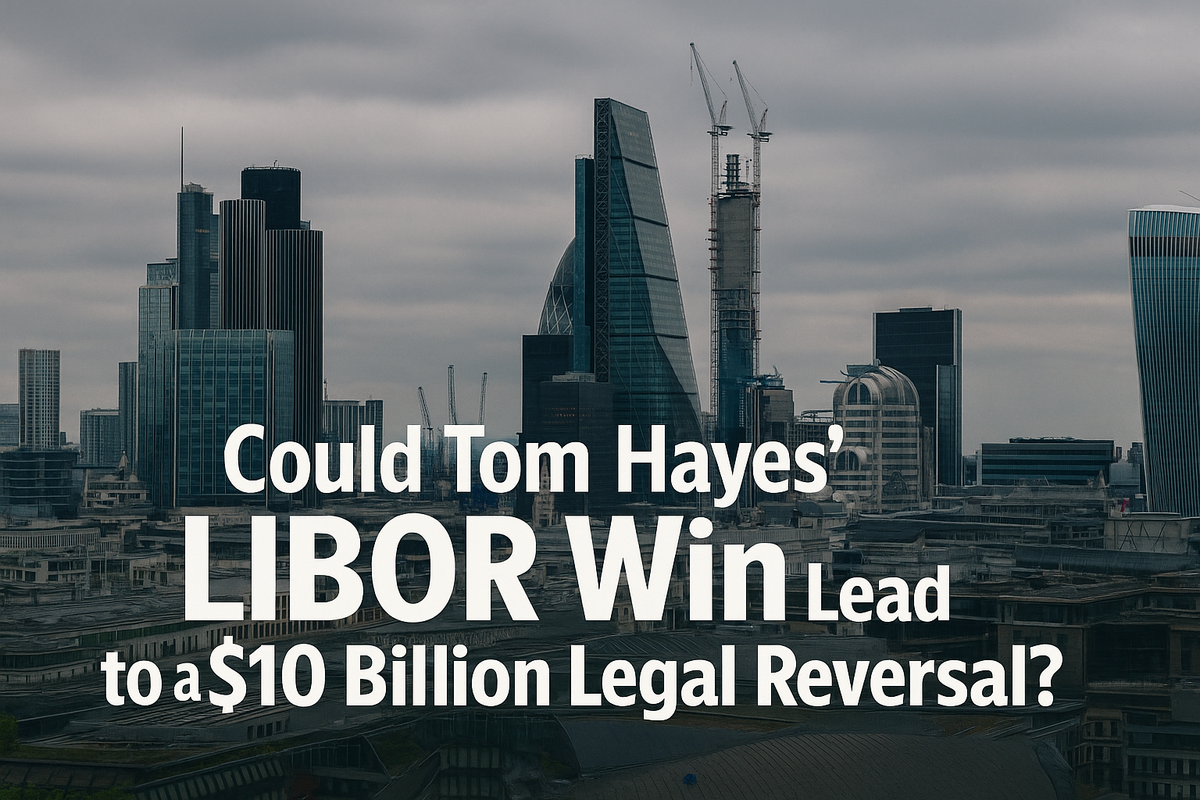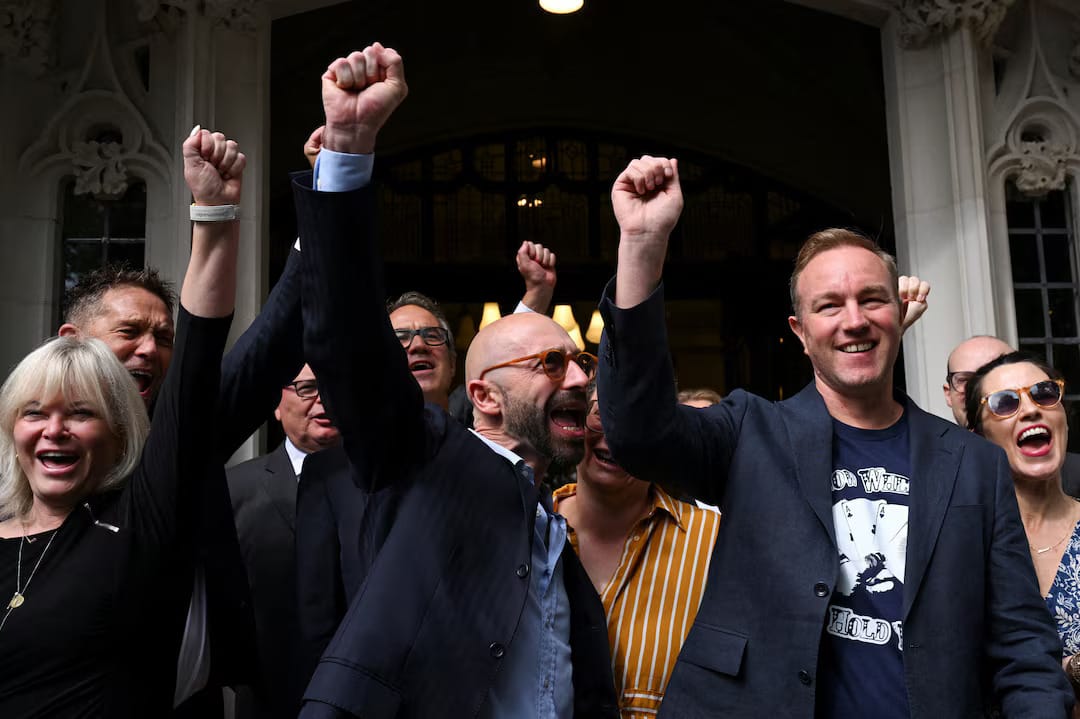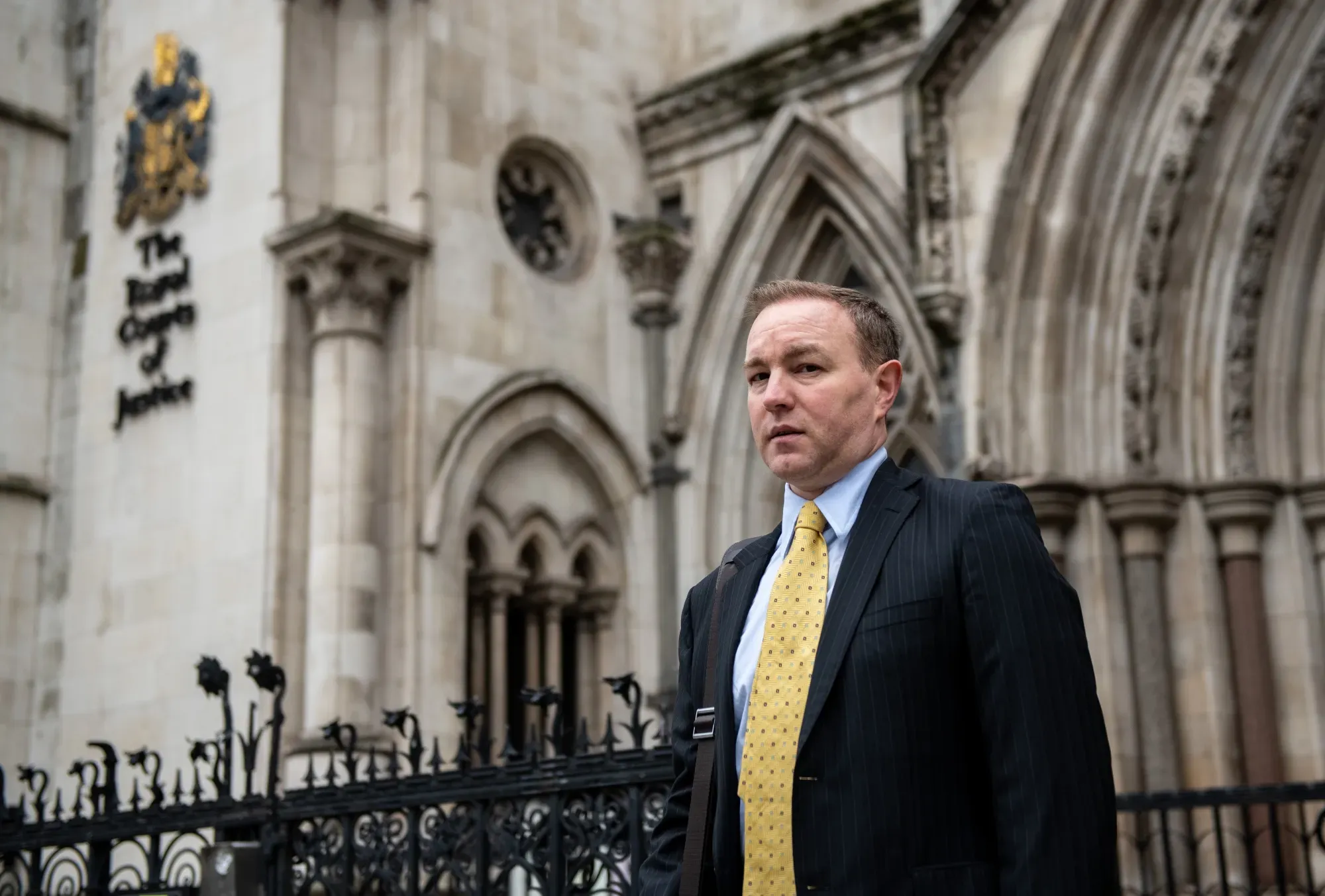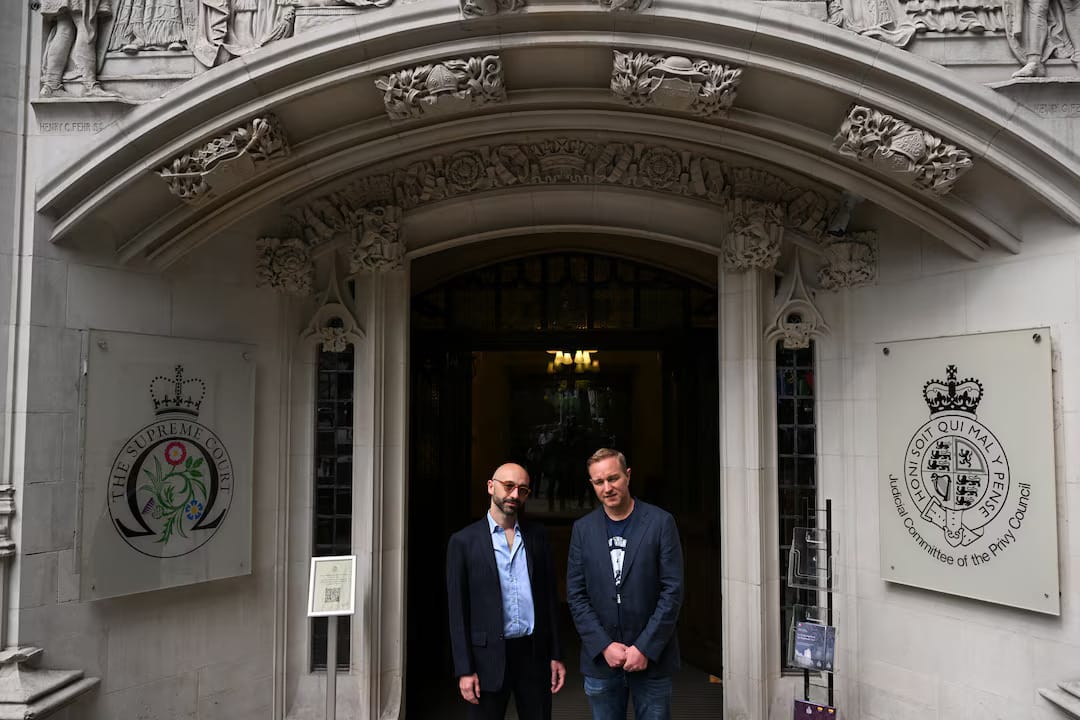Tom Hayes LIBOR Appeal Win: Will the $10 Billion Scandal Unravel?
Tom Hayes' LIBOR appeal win sends shockwaves through global finance, challenging past convictions and raising critical questions about regulatory oversight, corporate accountability, and the very integrity of the justice system in white-collar crime.

Written by Lavanya, Intern, Allegedly The News
LONDON, UNITED KINGDOM, July 24, 2025
Hayes' triumph, a result of the Supreme Court ruling that trial judges gave "legally inaccurate and unfair" directions to juries, casts a long shadow over the initial prosecutions that led to convictions for a total of nine bankers. The implications are profound, sparking debate on whether the initial prosecutions were flawed and if the real masterminds of the LIBOR manipulation escaped accountability, and if the pursuit of individual traders was a convenient, albeit flawed, distraction from deeper institutional culpability.
The Seismic Shift: Hayes' Legal Victory and Its Broad Implications
The Supreme Court's decision to overturn Hayes's conviction, along with that of Carlo Palombo, marks a watershed moment. The core of the appeal hinged on the interpretation of LIBOR submissions. Hayes and his legal team argued that it was permissible for banks to consider their commercial interests when submitting rates, so long as the submission remained within a "genuine opinion" range. The Supreme Court agreed, stating that the trial judges had wrongly directed juries that any consideration of commercial interest made a submission dishonest.
"The effect of the judge's directions was to usurp the function of the jury and remove from them consideration of Mr Hayes' defence to the allegation that he had agreed to the submission of rates which were false or misleading," stated Lord Leggatt in the Supreme Court judgment. This critical legal argument, essentially clarifying the subjective nature of LIBOR submissions within a permissible range, is what secured Hayes' landmark decision and sets a powerful precedent in white-collar crime.
This ruling could trigger a wave of overturned convictions. The Serious Fraud Office (SFO) itself, which spearheaded the LIBOR prosecutions, has stated it will not seek a retrial for Hayes, acknowledging the judgment. This decision by the SFO further emboldens other convicted traders to challenge their own verdicts. If the foundational premise of dishonesty in Hayes' case was flawed, similar arguments could be applied to others, potentially leading to a cascade of appeals and a significant financial and legal fallout for all parties involved.
The broader implications for global banks, regulators, and financial credibility are immense. Banks that paid billions in fines to settle LIBOR-related charges might now scrutinize their own settlements, potentially leading to further legal challenges. Regulators, particularly the SFO, face a serious blow to their reputation and their ability to prosecute complex financial misconduct. The ruling ignites questions about the robustness of regulatory frameworks put in place post-LIBOR, and whether they adequately address the nuanced realities of financial markets. Public trust, already eroded by the 2008 financial crisis and the LIBOR scandal, faces another significant test, as the justice system's capacity to hold powerful financial actors accountable is questioned.

From Ringmaster to Rescued: Tom Hayes' Journey
Tom Hayes was the first individual to be convicted in the sprawling LIBOR scandal, portrayed by prosecutors as the "ringmaster" of a global network of traders manipulating the interbank lending rate. His 2015 conviction and subsequent 11-year sentence (reduced from 14 years on appeal) sent a powerful message about cracking down on financial misconduct. However, Hayes consistently maintained his innocence, arguing that his actions were industry-wide practices and known to senior management. He claimed he was made a scapegoat in the wake of public outrage.
His journey from villain to victim, or at least a wronged individual, has been long and arduous. After his release from prison in 2021, Hayes tirelessly fought to clear his name. His relentless pursuit of justice, often against overwhelming odds and initial rejections of his appeals, has culminated in this stunning vindication. This rebranding, fueled by the Supreme Court's acknowledgment of flawed trial directions, is reshaping public opinion, shifting focus from individual culpability to systemic failures and potentially overzealous prosecution. Hayes' profile has transformed from a symbol of banking greed to a symbol of resilience against a seemingly infallible legal system.
A Timeline of the LIBOR Scandal and Hayes' Ordeal
- 1969: LIBOR's informal origins as a benchmark for syndicated loans.
- 1986: British Bankers' Association (BBA) formalizes the LIBOR setting process.
- 2007-2008: Global Financial Crisis highlights issues with LIBOR's reliability; concerns about manipulation emerge.
- June 2012: Barclays Bank was fined $450 million by US and UK regulators for LIBOR manipulation, exposing the scandal globally.
- December 2012: Tom Hayes arrested by British authorities; US charges follow.
- 2013-2019: SFO brings prosecutions against 20 individuals; nine bankers convicted.
- August 2015: Tom Hayes becomes the first individual convicted by a jury for LIBOR manipulation, sentenced to 14 years (later reduced to 11).
- May 2016: Hayes instructs solicitor to apply for review by the Criminal Cases Review Commission (CCRC).
- January 2021: Hayes was released from prison after serving half his sentence.
- October 2022: US dismisses criminal charges against Hayes after other similar US convictions are overturned.
- July 2023: CCRC refers Hayes's conviction back to the UK Court of Appeal.
- March 2024: UK Court of Appeal upholds Hayes's conviction, but certifies a point of law of general public importance for Supreme Court review.
- July 23, 2025: UK Supreme Court quashes the convictions of Tom Hayes and Carlo Palombo, citing "legally inaccurate and unfair" jury directions. SFO announces no retrial.
Deeper Issues and Regulatory Failures: Beyond Individual Traders
The LIBOR scandal was never just about a few "rogue traders." It was a symptom of deeper, systemic issues within global finance and highlighted significant regulatory failures. The very structure of LIBOR, relying on self-reported estimates from a small panel of banks, created an inherent vulnerability to manipulation. As Lord Leggatt noted, LIBOR submissions typically involved a "selection from within a range of borrowing rates," and the subjective nature of this process was not adequately addressed in the initial trials.
The case points to a critical flaw in how financial benchmarks were governed and overseen. Prior to the scandal, the British Bankers' Association (BBA) administered LIBOR with insufficient checks and balances. Conflicts of interest were rife, as banks both contributed to the rate and benefited from its manipulation through their trading positions.
Post-scandal, significant reforms were implemented. Oversight of LIBOR was transferred to the Intercontinental Exchange Benchmark Administration (IBA), and stricter governance and controls were put in place. Most importantly, a global transition to alternative, transaction-based benchmark rates like the Secured Overnight Financing Rate (SOFR) in the US and the Sterling Overnight Index Average (SONIA) in the UK has largely phased out LIBOR. This fundamental shift underscores the recognition that the old system was inherently flawed and vulnerable. Hayes' victory, in a perverse way, validates the need for these reforms by demonstrating the legal complexities and ambiguities inherent in the old LIBOR framework.

The Ripple Effect: Will Other Convictions Unravel?
Hayes's win will almost certainly inspire other convicted traders to challenge their own verdicts. Seven other individuals were convicted by juries in the UK, while two pleaded guilty. The core legal argument that swayed the Supreme Court – the misdirection to juries regarding the definition of dishonesty in LIBOR submissions – is directly applicable to many of these cases.
For instance, Christian Bittar and Philippe Moryoussef, also convicted of rate rigging, may now have strong grounds for appeal. The financial and legal fallout could be substantial. Each overturned conviction represents a significant cost in terms of legal fees, potential compensation, and a further dent in the SFO's credibility. It raises the specter of a domino effect, where the entire edifice of LIBOR prosecutions crumbles under legal scrutiny.
The appeals process itself is incredibly complex, requiring meticulous examination of trial transcripts, legal precedents, and often, an intricate understanding of financial instruments. Hayes secured this landmark decision by relentlessly pursuing his case through multiple appellate levels, supported by a legal team that effectively articulated the nuances of LIBOR's definition and the specific flaws in the trial judge's directions. The decision highlights the importance of clear, unambiguous legal definitions in complex financial cases and the need for judges to provide precise guidance to juries.
Ethical and Systemic Implications: A Precedent for Corporate Accountability?
This victory raises profound ethical and systemic implications for global financial justice. While Hayes' personal vindication is a powerful story, the reversal sets a complex precedent for corporate accountability.
Does this ruling weaken the justice system's ability to prosecute future financial misconduct? Critics might argue that it makes it harder to secure convictions in complex white-collar cases, as defendants can now lean on the "genuine opinion" clause and the ambiguity of market practices. It could be seen as an indication that prosecuting sophisticated financial crimes, particularly those involving nuanced market behavior, is inherently difficult.
However, others might argue that the ruling strengthens the justice system by upholding the principles of a fair trial and due process. It emphasizes that convictions must be based on clear legal definitions and accurate jury directions, rather than public pressure or a desire for symbolic retribution. It forces regulators and prosecutors to refine their understanding of financial markets and ensure that their cases are legally watertight.
The reputational damage from the LIBOR scandal was immense, deeply eroding public trust in financial institutions. This ruling, by overturning convictions, reopens those wounds and further complicates the narrative. It suggests that perhaps the initial narrative of greedy individuals acting alone was oversimplified, diverting attention from institutional failings. The geopolitical tensions, particularly between the US and UK legal approaches to LIBOR, also become more pronounced, as different jurisdictions grapple with similar factual patterns but arrive at divergent legal outcomes.
The critique that this reversal sets a dangerous precedent for corporate accountability is valid. It reinforces the perception that powerful institutions and their senior executives often escape the harshest penalties, while lower-ranking individuals bear the brunt. While the banks themselves paid massive fines, few top executives faced criminal prosecution. This ruling, by vindicating some of the convicted traders, could be interpreted as a step back for individual accountability within large organizations.

What Happens Next?
The immediate aftermath will see a flurry of legal activity as other convicted LIBOR traders explore their appeal options. The SFO will be under immense pressure to re-evaluate its remaining LIBOR-related convictions and potentially its overall strategy for prosecuting complex financial crimes. This could lead to a significant reshaping of how such cases are investigated and presented in court, with a greater emphasis on clearly defining "dishonesty" within the context of market practices.
Beyond the immediate legal sphere, the ruling will inevitably reignite academic and policy debates about the effectiveness of post-crisis financial regulation. While LIBOR itself has been phased out, the underlying issues of benchmark integrity, conflicts of interest, and the challenge of overseeing complex financial markets remain. The case will serve as a powerful cautionary tale for regulators globally, emphasizing the need for robust, legally sound frameworks that can withstand rigorous judicial scrutiny. Public opinion will continue to evolve, with increasing calls for greater transparency and accountability from both financial institutions and the regulatory bodies tasked with overseeing them.
The Unanswered Questions
The Tom Hayes verdict forces us to confront uncomfortable truths about financial justice. Is our legal system equipped to handle the intricate realities of global finance, or does it risk oversimplifying complex market behavior to secure convictions? What does this reversal truly mean for corporate accountability, and how can we ensure that the "real masterminds" are held responsible? How can public trust in financial markets and the justice system be rebuilt when high-profile convictions are overturned, and what role should public opinion play in shaping such complex legal battles?
Sources
Justia, Cornell Law, Bloomberg, Law Gazette, Pymnts.com, Associated Press, The Supreme Court of the United Kingdom Judgement, Wikipedia, Investopedia, ResearchGate, Reuters, Bloomberg.




